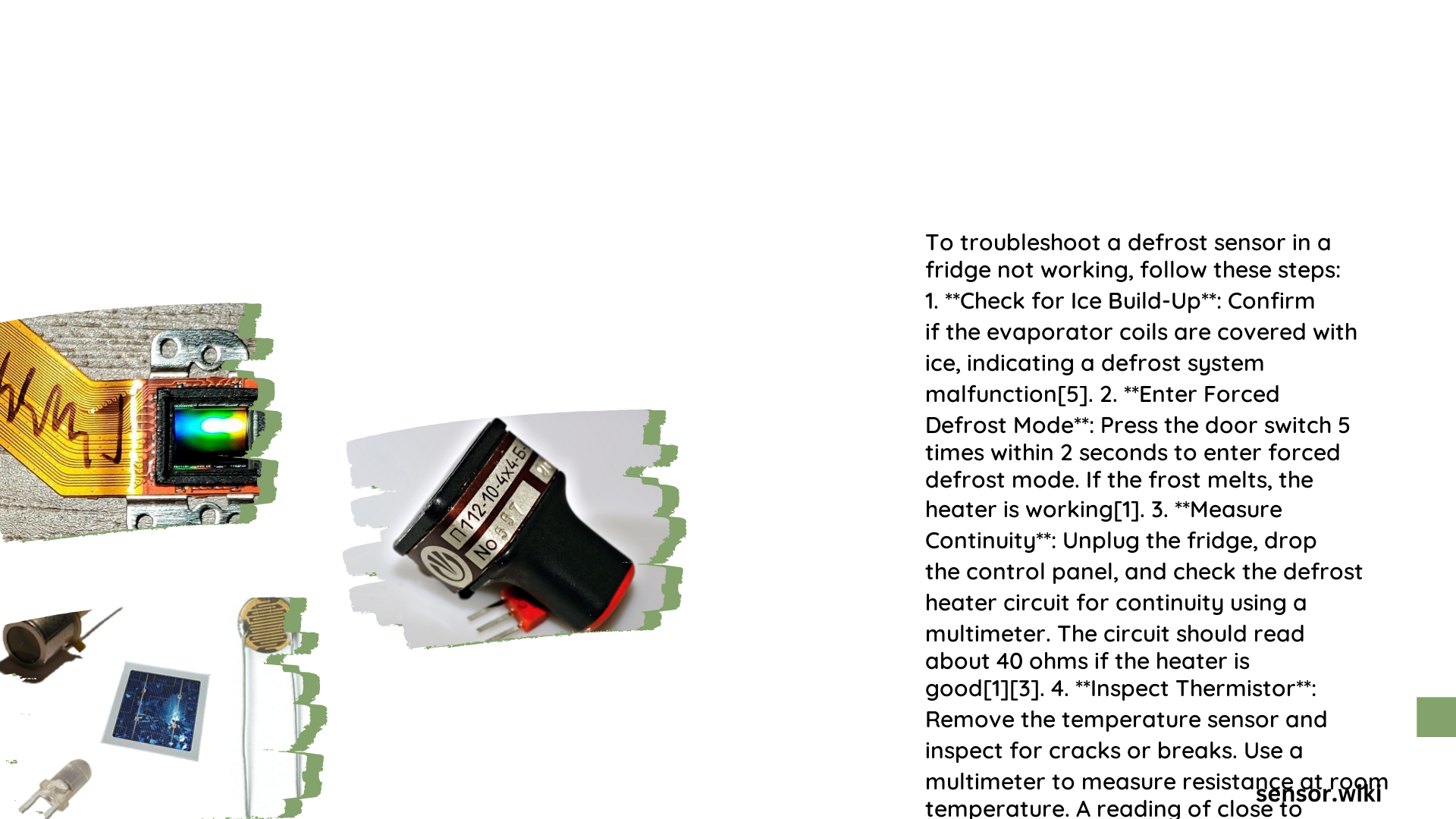A defrost sensor in a refrigerator is crucial for maintaining proper temperature and preventing ice buildup. When this sensor malfunctions, it can lead to various issues, including excessive frost accumulation and temperature fluctuations. This comprehensive guide will help you diagnose and address problems with a non-functioning defrost sensor in your fridge, ensuring optimal performance and longevity of your appliance.
What Are the Common Signs of a Faulty Defrost Sensor?
Recognizing the symptoms of a defective defrost sensor is the first step in troubleshooting. Here are some telltale signs:
- Excessive frost buildup in the freezer compartment
- Inconsistent cooling in the refrigerator section
- Water leakage inside the fridge or on the floor
- Unusual noises coming from the appliance
- Increased energy consumption
If you notice any of these issues, it’s time to investigate your fridge’s defrost sensor.
How Does a Defrost Sensor Work in a Refrigerator?

Understanding the function of a defrost sensor is crucial for effective troubleshooting. The defrost sensor, also known as a defrost thermistor, plays a vital role in the refrigerator’s defrost cycle:
- It monitors the temperature of the evaporator coils
- Signals the defrost control board when defrosting is necessary
- Helps terminate the defrost cycle when the correct temperature is reached
When functioning correctly, this sensor ensures that defrosting occurs at appropriate intervals, preventing ice buildup without wasting energy.
What Tools Are Needed for Defrost Sensor Troubleshooting?
Before you begin the troubleshooting process, gather the following tools:
| Tool | Purpose |
|---|---|
| Multimeter | To test sensor resistance and continuity |
| Screwdriver set | For accessing the sensor and removing panels |
| Pliers | To disconnect wiring harnesses if necessary |
| Safety gloves | To protect hands during the process |
| Work light | For better visibility in dark areas of the fridge |
Having these tools ready will make the troubleshooting process smoother and more efficient.
How to Locate the Defrost Sensor in Your Fridge?
Finding the defrost sensor is the first step in physical troubleshooting. Follow these steps:
- Unplug the refrigerator for safety
- Remove the contents of the freezer
- Locate the back panel of the freezer compartment
- Remove any screws or clips holding the panel in place
- Carefully remove the panel to expose the evaporator coils
- Look for a small device attached to or near the evaporator coils – this is likely the defrost sensor
The sensor is typically a small, cylindrical or flat component with two wires leading to it.
What Are the Steps to Test a Defrost Sensor?
Once you’ve located the sensor, follow these steps to test it:
- Disconnect the sensor from the wiring harness
- Set your multimeter to the resistance (ohms) setting
- Touch the multimeter probes to the sensor’s terminals
- Check the resistance reading:
- At room temperature, it should be around 11,000 ohms
- In ice water, it should be approximately 63,000 ohms
- If the readings are significantly off or show no resistance, the sensor is likely faulty
Remember to consult your refrigerator’s manual for specific resistance values, as they can vary between models.
How to Replace a Faulty Defrost Sensor?
If you’ve determined that the defrost sensor is indeed faulty, here’s how to replace it:
- Purchase a replacement sensor compatible with your fridge model
- Unplug the refrigerator
- Access the sensor as described earlier
- Disconnect the old sensor from the wiring harness
- Remove any clips or screws holding the sensor in place
- Install the new sensor in the same position
- Reconnect the wiring harness
- Reassemble the freezer panel
- Plug in the refrigerator and monitor its performance
Always ensure the replacement sensor matches the specifications of the original to avoid compatibility issues.
What Are Some Preventive Measures for Defrost Sensor Issues?
To minimize future problems with your defrost sensor:
- Regularly clean the refrigerator coils to prevent dust buildup
- Avoid overloading the freezer, which can strain the defrost system
- Keep the door seals clean and in good condition to prevent moisture ingress
- Periodically check for frost buildup and address it promptly
- Consider having your refrigerator serviced annually by a professional
By following these preventive measures, you can extend the life of your defrost sensor and maintain optimal fridge performance.
When Should You Call a Professional for Defrost Sensor Problems?
While many defrost sensor issues can be diagnosed and fixed at home, there are situations where professional help is advisable:
- If you’re uncomfortable working with electrical components
- When the problem persists after replacing the sensor
- If you notice multiple issues with your refrigerator
- When your fridge is still under warranty (to avoid voiding it)
A qualified technician can provide a comprehensive diagnosis and ensure all related systems are functioning correctly.
By following this guide, you should be able to troubleshoot and potentially resolve issues with a non-functioning defrost sensor in your fridge. Remember to always prioritize safety and consult professional help when in doubt.
